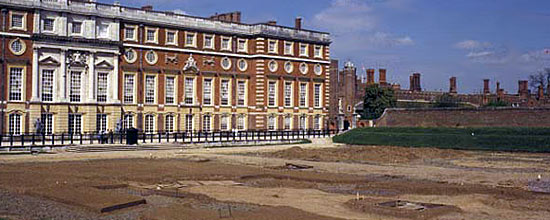

Guidelines for Reconstructing Cultural Landscapes
Reconstruct Non-Surviving Landscapes

Research and Document Historical Significance
![]()
Researching and documenting the property’s historical significance, focusing on the availability of documentary and physical evidence needed to justify reconstruction of the non-surviving cultural landscape.
![]()
Undertaking a reconstruction based on insufficient research so that, an historically inaccurate cultural landscape is created.
Reconstructing a cultural landscape unnecessarily when an existing landscape adequately reflects or explains the history of the property, the historical event, or has the same associative value.
Executing a design for the landscape that was never constructed historically.
Investigate Archeological Resources
![]()
Investigating archeological resources to identify and evaluate the spatial organization and land patterns which are essential to the design and/or layout of the landscape.
Minimizing ground disturbance to reduce the possibility of destroying archeological resources.
![]()
Failing to identify and evaluate archeological information prior to reconstruction, or destroying extant historical information not relevant to the reconstruction which should be preserved in place.
Operating heavy machinery or equipment in areas where it may disturb archeological resources.
Identify, Protect and Preserve Extant Historic Features
![]()
Identifying, protecting and preserving extant historic features of the cultural landscape such as remnants of structures, field patterns, or walkways.
![]()
Beginning reconstruction work without first conducting a detailed site investigation to physically substantiate the documentary evidence.
Basing a reconstruction on conjectural designs or different features from other cultural landscapes.
The Privy Garden at Hampton Court, U.K., was originally designed for King William III in 1702. By the mid-nineteenth century, William and Mary’s “broderie” had completely disappeared. Since that time, the formal garden laid out for William III had provided an informal and shady retreat for visitors. As the scholarly basis for the reconstruction, archeology revealed the outlines of the garden; and was coupled with extensive research into the original planting design. The work included the propagation of original holly and yews to allow for in-kind replacement. All non-original vegetation from the garden (e.g. relocating trees of horticultural importance from later designs to an off-site nursery) was removed. (NPS, 1994 and 1995)